Amazing Pakistan:
10 amazing facts you might not know
Sometimes people, in any country, simply do not know enough about their own country, and are pleasantly surprised, even embarrassed, when a foreigner tells them something amazing about their country. I dare say this can be expected, if simply because there is always so much more to know!
Nevertheless, one should know at least some of the remarkable facts about our country which distinguish us from all other countries; our USPs if you will. These attributes are a source of pride and a source of profound inspiration for us.
Bypassing commonly heard of highlights like Mohenjadaro, Lahore Fort and so on, this is my list of 10 lesser known amazing and unique facts about our gifted country. Do share your own list if you wish, by way of a comment. Let’s all be more knowledgeable by sharing our own lists!
# 10: RANIKOT FORT
Ranikot Fort is believed to be the world’s largest fort with a circumference of approximately 26 kilometres. Since 1993, it has been on the tentative list of UNESCO World Heritage Sites.
Ranikot Fort is a historical fort near Sann, Jamshoro District, Sindh province. Archaeologists point to 17th century as its time of first construction.
# 9: THE KARAKORAM HIGHWAY (KKH)
The Karakoram Highway (KKH) is the world’s highest, all-weather, paved international road, connecting 2 countries. It is a truly unique example of cooperation between 2 countries, Pakistan and China, to establish infrastructure that is a marvel of engineering.
Work on a highway to link the rest of the country with the northern areas first started in 1958. Then in 1966 it was decided to link Pakistan with China through the highway and the project was undertaken jointly by the teams of the 2 countries. On the Pakistani side, the Highway was constructed by the FWO (Frontier Works Organisation), employing the Pakistan Army Corps of Engineers. Over 21 million cubic meters of earthworks and rock-blasting was done, using over 8,000 tons of explosives and 80,000 tons of cement. Besides vehicles and machinery of every size and description, some 15,000 workers were involved in the construction of the highway.
The KKH starts from Havelian, about 100 kilometers from Islamabad and 805 kilometers later, reaches the Chinese border point at the top of the 4,733 meters high Khunjerab Pass. On this long journey it traverses through what is arguably the most dramatic and awe-inspiring high mountainous landscape on the planet. The region includes some of the world’s largest glaciers like the Baltoro Glacier and many other glaciers can be seen while travelling on the KKH. These include the Minapin, Passu, Ghulkin and Khunjerab Glaciers.
Five peaks over 8,000 meters that are in Pakistan are also accessible from the KKH. The notable mountains that can be directly seen while traveling on the highway are:
- Nanga Parbat, 9th highest mountain of the world at 8,126 meters
- Rakaposhi, 27th highest peak in the world at 7,788 meters
- Diran, considered by many to be themost dangerous mountain in Pakistan
- Shishpar
- Ultar Peak
- Tupopdan, also known as Cathedral Peaks near Passu and
- K2, the second highest mountain in the world after Mt. Everest
It is no wonder that the Karakoram Highway is also referred to as the “Eighth Wonder of the World.” Travelling on the KKH all the way to the Chinese border at the top of Khunjerab Pass is surely a ‘must-do’ journey for all adventure-seekers.
# 8: THE PAKISTAN ‘SPHINX’
Recall the ancient Sphinx of Egypt? A huge, incredible sculpture in Egypt made some 5,000 years ago by presumably thousands of slave labour.
“The Great Sphinx of Giza (literally: Father of Dread), is a limestone statue of a reclining or couchant sphinx (a mythical creature with a lion’s body and a human head), with the face generally believed to represent the face of Pharaoh Khafra.
It is the largest and oldest known monolith statue in the world, standing 73.5 meters long, 19.3 meters wide, and 20.22 meters high. It is commonly believed to have been built by ancient Egyptians during the reign of the Pharaoh Khafra (c. 2558–2532 BC).”
Source: Wikipedia
So what is to do with Pakistan? Well, there is a Pakistan Sphinx as well in Balochistan, carved by winds over centuries! The picture tells it all. Surely one of our most unique natural wonders.
# 7: THE MIGHTY INDUS
River Indus originates in Tibet, and after entering Pakistan, flows down the entire length of the country to enter the Arabian Sea near Karachi.
The total length of the river is 3,180 kilometers, making it Pakistan’s longest river. Although only the 22nd longest river in the world, the Mighty Indus is unique in many ways. To start with, it is one of the few rivers in the world to exhibit a tidal bore. Then, it is one of the very few rivers in the world that supported thriving civilizations more than 3,000 years ago. Ever since then many have traveled down its length in history, including Alexander the Great.
It is also the feedstock to the world’s largest irrigation canals network in the world. Then it is one of the few great rivers of the world to traverse through several eco-systems – from permafrost mountains, to alpine eco-system, to alluvial plains, to arid scrubland, to harsh desert, and then finally to mangrove deltaic eco-system.
# 6: KEWRA SALT MINES
The Khewra Salt Mine is located in Khewra, District Jhelum and approachable from the Islamabad to Lahore motorway. It is Pakistan’s largest and oldest salt mine, and the world’s second largest. Its history dates back to its discovery by Alexander’s troops in 320 BC, but it started trading in the Mughal era. It still remains the largest source of salt in the country, producing more than 350,000 tons per year. Estimates of the reserves of salt in the mine vary from 82 million tons to 600 million tons.
The mine is a part of a salt range of mountains that stretches for about 300 kilometers. It is said that the salt reserves were discovered not by Alexander, nor by his
allies, but by his army’s horses, when they were found licking the stones. Ailing horses of his army also recovered after licking the rock salt stones.
The mine includes the awe-inspiring 75-meter-high (245 feet) chamber called the Assembly Hall, the Pul-Saraat, a salt bridge with no pillars over an 25-meters-deep brine pond and the Sheesh Mahal (Palace of Mirrors), where salt crystals are light pink.
Source: Wikipedia
# 5: REKO DIQ
This name has been in the media quite often in recent years, but mainly shrouded in controversy.
But we won’t talk about that here.
In a nutshell, Reko Diq by some estimates is the world’s largest gold and copper mine in the world. Some say the fifth largest gold mine, leaving aside the copper.
Reko Diq itself is a small town in the northwest of Chagai district of Balochistan, close to the borders with Iran and Afghanistan. It’s a remote hard desert type land, sparsely populated and with extreme temperatures, ranging from up to 50 degrees Celsius in the summer to -10 degrees in winter.
And Chagai you will remember if you jog your memory. It is where our first nuclear bomb was tested, deep under a Chagai mountain, which to the awe of the whole nation turned white after the explosion!
Reko Diq may be a blessing for our future generations. Or if may turn out to be a curse if we (our leaders) do not respect this magnanimous gift of Mother Nature and sell ourselves short. But let’s hope (and work!) for it to be a blessing.
# 4: OUR MOUNTAINS
Yes, we all know Pakistan has some phenomenal mountains. But the details are really fascinating!
Pakistan has 108 peaks above 7,000 meters. Most of these lie in the Karakoram range, but some are also in the Himalayan and Hindu Kush ranges. Pakistan is home to the second highest mountain in the world, K2, and 5 the 14 highest peaks on Mother Earth (the eight-thousanders) are in Pakistan.
| World Rank | Rank (Pakistan) | Name | Height (m) | Location |
| 2 | 1 | K2/Godwin Austen Peak | 8611 | Karakoram |
| 9 | 2 | Nanga Parbat | 8126 | Himalaya |
| 11 | 3 | Gasherbrum I/K5 | 8080 | Baltoro Karakoram |
| 12 | 4 | Broad Peak | 8051 | Baltoro Karakoram |
| 13 | 5 | Gasherbrum II/K4 | 8035 | Baltoro Karakoram |
Ain’t that something?
# 3: GLACIERS GALORE!
It is estimated that there are over 130,000 glaciers in the world. According to ICIMOD estimates, Pakistan is home to no less than 5,218 of these! Our glaciers cover an area of 15,040 sq km.
“Glaciers are made up of fallen snow that, over many years, compresses into large, thickened ice masses. Glaciers form when snow remains in one location long enough to transform into ice. What makes glaciers unique is their ability to move. Due to sheer mass, glaciers flow like very slow rivers. Presently, glaciers occupy about 10 percent of the world’s total land area.”
Source: http://nsidc.org/cryosphere/glaciers/questions/what.html
Glaciers in Pakistan constitute the biggest mass of glaciated ice found anywhere in the whole world outside the Polar regions! Our glaciers include Siachen Glacier- the world 2nd longest glacier (75 kilometres), located in the eastern Karakoram range along the disputed India-Pakistan line of control. Its altitude ranges from 5,753 m in the upper reaches to 3,620 m in the lower.
Karakorum is also home to the world’s third, fifth and seventh longest glaciers in the world, namely Biafo glacier (67 kilometers), Baltoro (63 kilom;eters) an;d the Batrura (57 kilometers).
Not so trivial related trivia:
A scientist who studies glaciers, or glaciology (an interdisciplinary earth science that geophysics, geology, geography, geomorphology, climatology, meteorology, hydrology, biology and ecology) is called a Glaciologist.
# 2: THE INDUS DOLPHIN
We usually associate dolphins with the open seas and while the vast majority of dolphin species (about 33 species) do inhabit the seas and oceans, 4 unique species live in freshwater rivers. One of these 4 species is the Indus Dolphin.
With its long pointed nose, Bhulan – as it is commonly called, the Indus river dolphin, first came into limelight in 1977, when Giorgio Pilleri, an Italian neurologist, wrote his groundbreaking publication, The Secrets of the Blind Dolphin, after his expedition to the river Indus and raised alarm about the diminishing number of this rare species.
Pilleri counted only 150 dolphins over a stretch of 170 kilometres, leading to the government of Pakistan proclaiming it an endangered species and declaring the area between Sukkur and Guddu barrages as a Dolphin Reserve
The population of these dolphins is severely fragmented by dams and barrages; it has suffered enormous range declines in the last hundred years and is threatened by declining freshwater supplies, pollution, capture in fishing nets and hunting, which is quite dismaying considering that these cetaceans are extremely rare, occurring in the Indus River and are endemic to Pakistan.
Hundreds of
years ago, forced to live in the murky freshwaters of the Indian peninsula due to natural catastrophe, the Indus river dolphin’s eyes became atrophied as an evolutionary process. However, this loss of vision was compensated by an extremely efficient bio-sonar system. This heightened sense of echolocation helps the dolphins to navigate through sound and sound waves – making them a truly unique species. The Indus River Dolphin is a vital part of our natural heritage and needs to be strongly protected.
# 1: JUNIPER FORESTS
I once read an introductory sentence to an article several years ago, the gist of which was: “Some trees in the juniper forests of Pakistan today, were already a few years old when the Pyramids in Egypt were being built.”
FYI, the Pyramids of Giza in Egypt were constructed around 2560 BC, or, to save you doing the maths, about 4,500 years ago from today! So read that first sentence again and take a deep breath!
Our juniper forest in the Balochistan province (mainly in Ziarat and environs), often called living fossils, is the second largest juniper forest in the world, covering an area of about a thousand rapidly depleting hectares. The forests are evergreen, growing in extreme dry and rugged environment at an elevation between 2,000 and 3,000 meters.
The juniper forest ecosystem supports a rich diversity of plant species and provides a habitat for several endangered wildlife species, including the Suleman markhor, urial, black bears, wolves, Afghan Pica, foxes, jackals and several species of migratory birds.

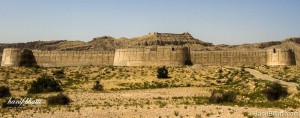
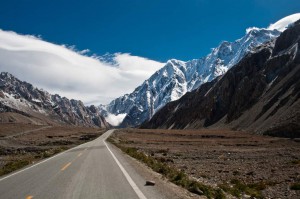

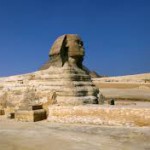
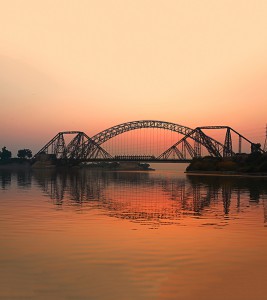
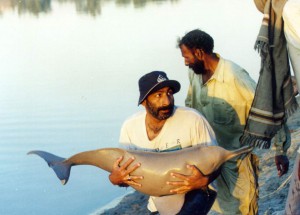
Leave a Reply